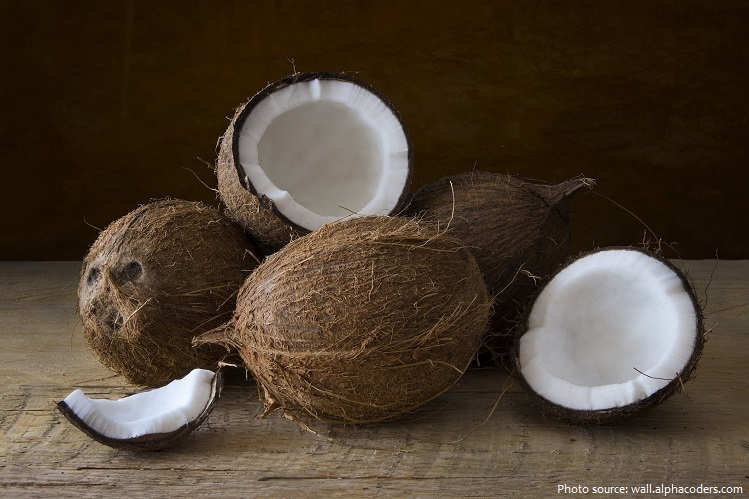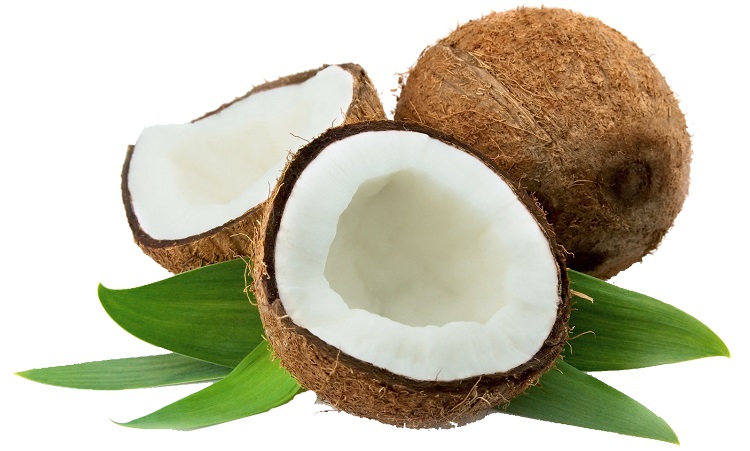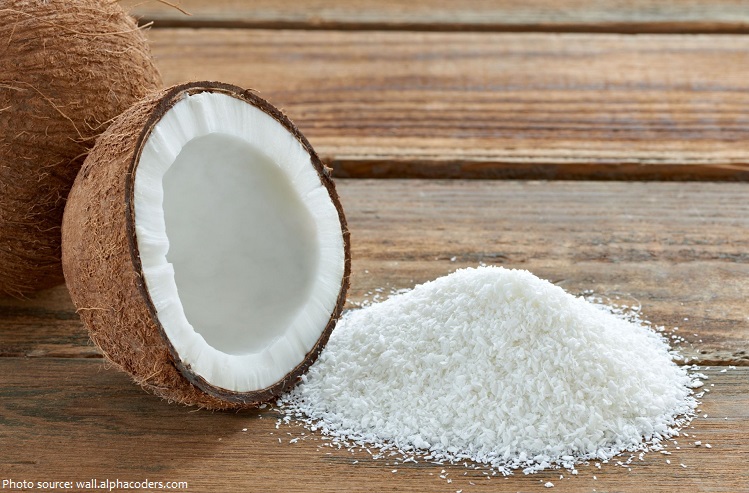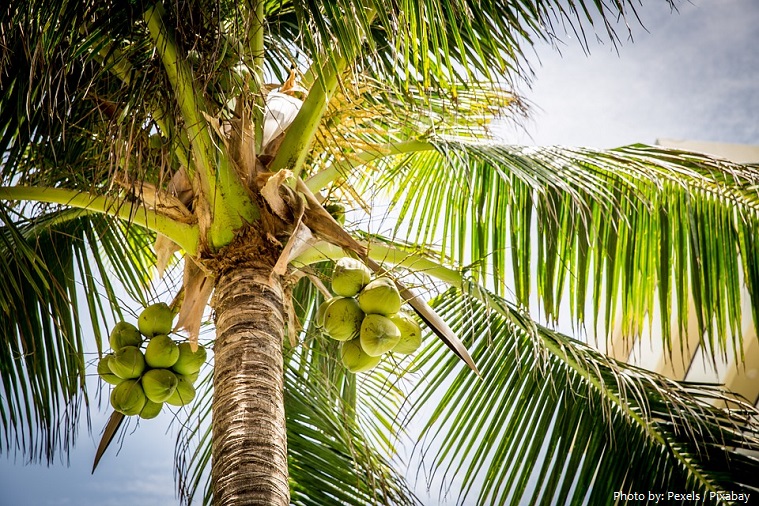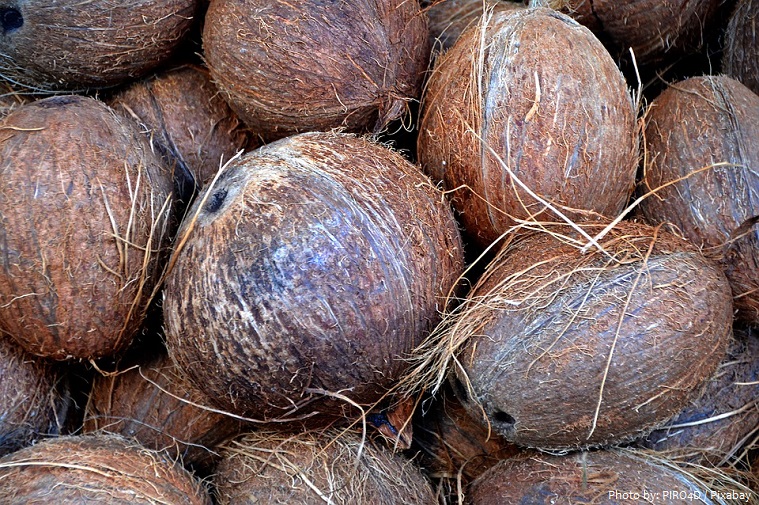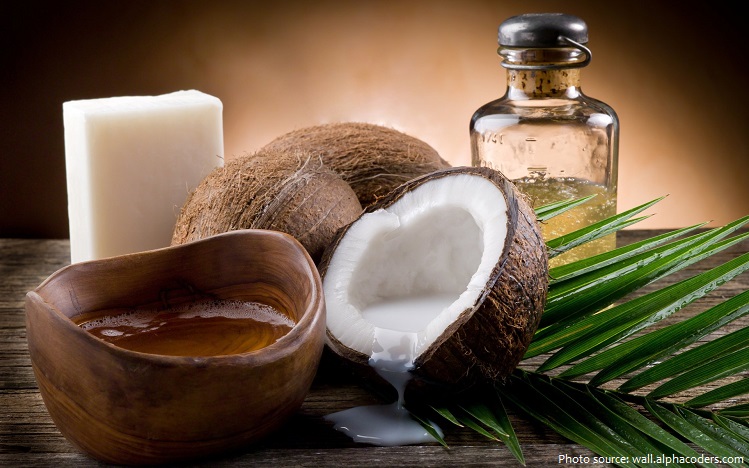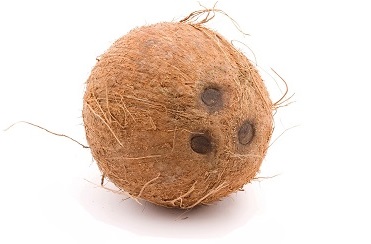The coconut is the fruit of the coconut tree, a member of the palm tree family (Arecaceae).
Botanically, the coconut is classified as a fruit – more specifically, it is a drupe. Drupes are more commonly called stone fruits. Other stone fruits include peaches and nectarines; blackberries and raspberries are drupes comprised of aggregates of drupelets.
The word “coconut” itself can be misleading because “nut” is part of the word. A loose definition of nut is a one-seeded fruit, so one could argue on behalf of the coconut. However, a true nut, like the acorn, does not open at maturity to release its seeds. The seeds are released when the fruit wall decays or are digested by an animal.
For thousands of years, the coconut palm has entwined itself in history, from tropical coasts to typical shelves in global groceries.
Called the “tree of life” by the many cultures that have depended upon it through time, it provides sustenance, succor and shelter.
While it now grows on every subtropical coastline around the world, genetic testing underwritten by the National Geographic Society in 2011 showed the coconut originated in India and Southeast Asia. From its original home, the nut—which can float—made its way independently, traversing both hemispheres.
Literary evidence from the Ramayana and Sri Lankan chronicles indicates that the coconut was present in South Asia before the 1st century BC.
Another early mention of the coconut dates back to the “One Thousand and One Nights” story of Sinbad the Sailor; he is known to have bought and sold coconut during his fifth voyage.
The name “coconut”, it is believed, was awarded to this tree by Spanish and Portuguese explorers. The name was derived from the Iberian ‘El Coco’, which referred to a mythical hairy monster. The kernel and hair around the fruit probably generated this connection. The suffix ‘nut’ was added to refer to the seed-bearing palm, just like most other tree seeds are referred to, in English. The name stuck, and today the whole world knows the tree as the coconut palm.
The coconut tree rises to a height of up to up to 30 meters (98 feet) tall, with pinnate leaves from 4 to 6 meters (13 to 20 feet) long, and pinnae 60 to 90 centimeters (2 to 3 feet) long; old leaves break away cleanly, leaving the trunk smooth. The flowers of the coconut palm are radially symmetric and polygamomonoecious, with both male and female flowers in the same inflorescence. Mature fruits, ovoid or ellipsoid in shape, measure from 30 to 45 centimeters (12 to 18 inches) in length and from 15 to 20 centimeters (6 to 8 inches) in diameter.
In a season, a single coconut palm may yield 20-150 mature fruits.
The coconut we buy in the store does not resemble the coconut you find growing on a coconut palm. An untouched coconut has three layers. The outermost layer, which is typically smooth with a greenish color, is called the exocarp. The next layer is the fibrous husk, or mesocarp, which ultimately surrounds the hard woody layer called the endocarp. The endocarp surrounds the seed. Generally speaking, when you buy a coconut at the supermarket the exocarp and the mesocarp are removed and what you see is the endocarp.
Coconuts are distinct from other fruits because their endosperm contains a large quantity of clear liquid, called “coconut milk” in the literature, and when immature, may be harvested for their potable “coconut water”, also called “coconut juice”.
The white, fleshy part of the seed, the coconut meat, can be eaten raw or cooked.
The meat may also be grated and mixed with water to make coconut milk, used in cooking and as a substitute for cow’s milk.
Dried coconut flesh is called copra, and the oil and milk derived from it are commonly used in cooking – frying in particular – as well as in soaps and cosmetics.
There are only 19 calories in 100 milliliters (3.4 fluid ounces) of coconut water.
There are 230 calories in 100 milliliters (3.4 fluid ounces) of coconut milk.
There are 354 calories in 100 grams (3.5 ounces) of raw coconut meat.
The coconut is highly nutritious and rich in fibre, vitamin C, vitamin E, vitamin B1, vitamin B3, vitamin B5 and vitamin B6; and minerals including iron, copper, selenium, sodium, calcium, magnesium, manganese, phosphorous and zinc.
The health benefits of coconuts include heart health, reduce blood pressure, boost the immune system, improves good cholesterol, improves digestion, poses anti-viral, anti-bacterial, anti-fungal, and anti-parasite properties, helps protect against kidney disease and bladder infection, helps keep hair and skin healthy and youthful looking, prevents wrinkles, sagging skin, age spots, and provides sun protection aid weight loss and help prevent cancer.
The United States Food and Drug Administration consider coconuts to be a tree nut.
While allergic reactions to coconut have been documented, most people who are allergic to tree nuts can safely eat coconut.
Coconut palms are normally cultivated in hot and wet tropical climates.
Most of the world’s coconuts are produced on small native plantations.
Coconut palms are grown in more than 90 countries and territories of the world.
Most of the world production is in tropical Asia, with Indonesia, the Philippines, and India collectively accounting for over 70%.
Following a 1984 study on “Injuries Due to Falling Coconuts”, exaggerated claims spread concerning the number of deaths by falling coconuts. Falling coconuts, according to urban legend, kill a few people a year. This legend gained momentum after the 2002 work of a noted expert on shark attacks was characterized as saying that falling coconuts kill 150 people each year worldwide. This statistic has often been contrasted with the number of shark-caused deaths per year, which is around eight.
